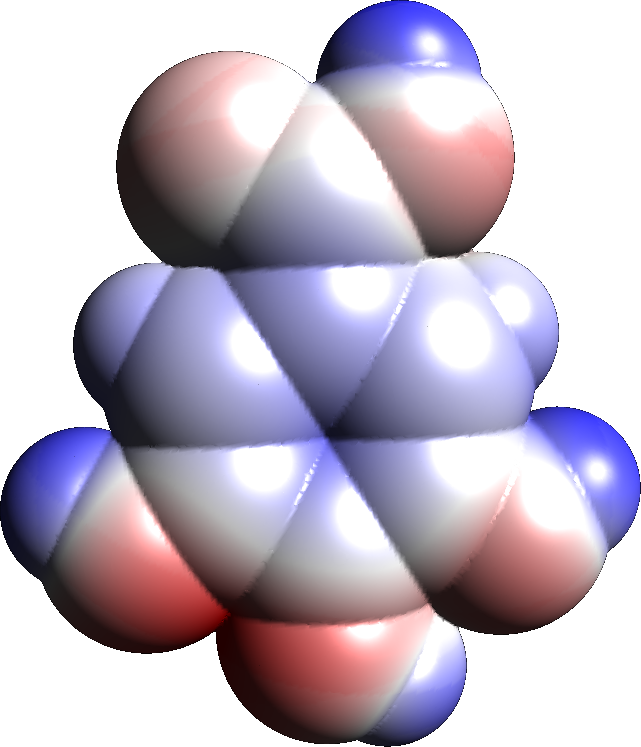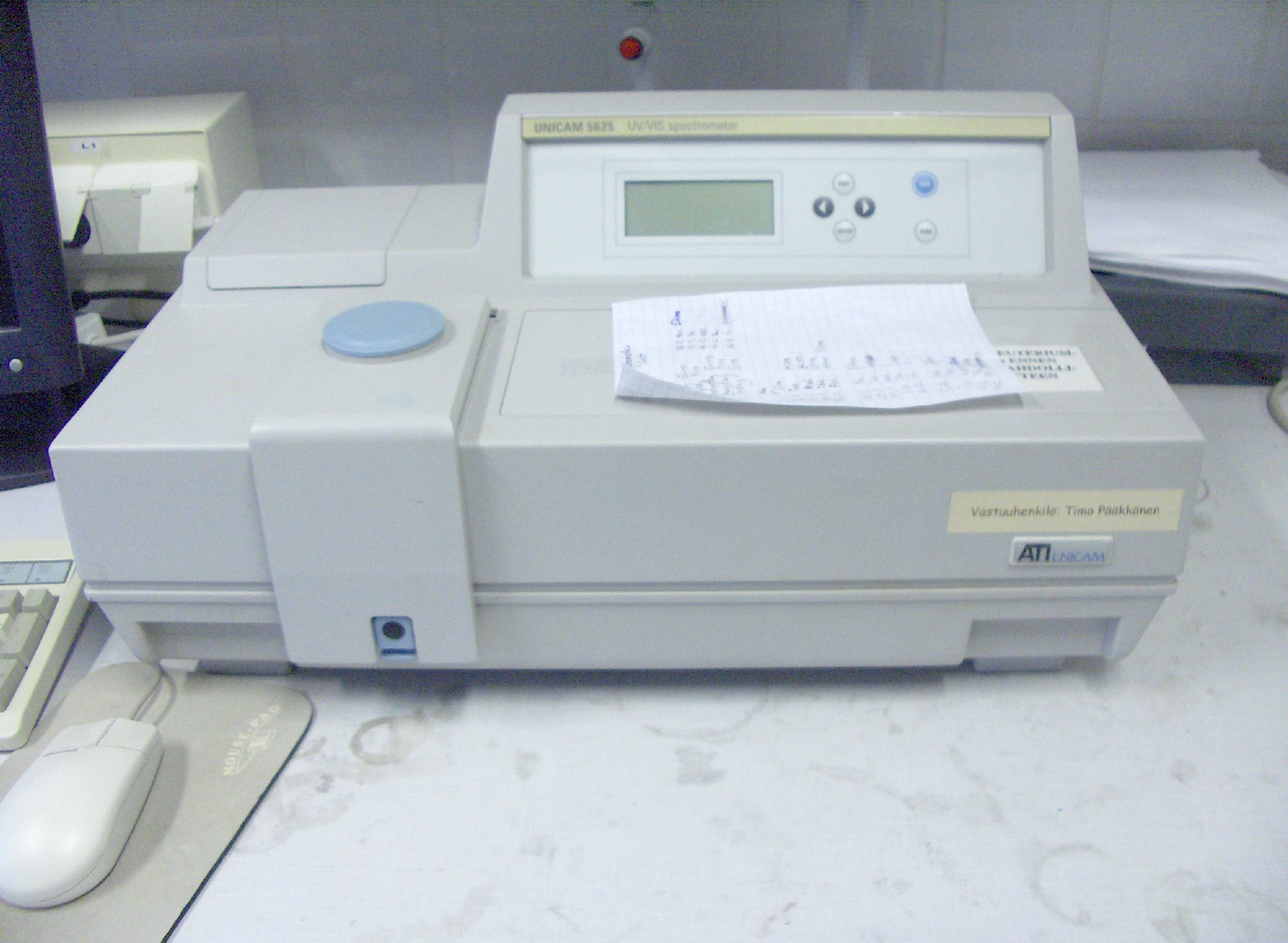|
Rufigallol
Rufigallol or 1,2,3,5,6,7-hexahydroxy-9,10-anthraquinone is an organic compound with formula . It one of several hydroxyanthraquinones. It occurs naturally being derived from gallic acid. The compound is soluble in dioxane, from which it crystallizes as red needles that sublime without melting at 365 °C. It can be obtained by treating gallic acid with concentrated sulfuric acid and then with sodium hydroxide. It is prepared by acid-catalyzed condensation of a pair of gallic acid molecules. Rufigallol is particularly toxic to the malarial parasite ''Plasmodium falciparum'' and has a synergistic effect in combination with the antimalarial drug exifone, which has structural similarities to rufigallol.R. W. Winter, Kenneth A. Cornell, Linda L. Johnson, Marina Ignatushchenko, David J. Hinrichs, Michael K. Riscoe (1996), ''Potentiation of The Antimalarial Agent Rufigallol''. Antimicrobial Agents and Chemotherapy, Vol. 40, No. 6, Pages 1408–14Online versionaccessed on 2010-02-01. ... [...More Info...] [...Related Items...] OR: [Wikipedia] [Google] [Baidu] |
Octahydroxyanthraquinone
Octahydroxyanthraquinone is an organic compound with formula , formally derived from anthraquinone by replacement of 8 hydrogen atoms by hydroxyl groups. The compound was obtained in 1911 by Georg von Georgievics Wahl, Andre; Atack, F. W (1919) ''The Manufacture Of Organic Dyestuffs''. G. Bell And Sons, LimitedOnline versionaccessed on 22 January 2010. and can be obtained through oxidation of rufigallol ( 1,2,3,5,6,7-hexahydroxyanthraquinone) with boric acid and mercuric oxide in sulfuric acid at . Esters of octahydroxyanthraquinone, where all eight hydroxyls are replaced by straight-chain 1-alkanecarboxylate groups -()''n''-COO-, with ''n'' between 6 and 14, are liquid crystals and have been studied for possible LCD applications. Octahydroxyanthraquinone is active against the malaria parasite, but rufigallol Rufigallol or 1,2,3,5,6,7-hexahydroxy-9,10-anthraquinone is an organic compound with formula . It one of several hydroxyanthraquinones. It occurs naturally being ... [...More Info...] [...Related Items...] OR: [Wikipedia] [Google] [Baidu] |
Hydroxyanthraquinone
In organic chemistry Organic chemistry is a subdiscipline within chemistry involving the science, scientific study of the structure, properties, and reactions of organic compounds and organic matter, organic materials, i.e., matter in its various forms that contain ... hydroxyanthraquinones refers to compounds with the formula C12H8−n(OH)n(CO)2 where n ≥ 1. Almost all hydroxyanthraquinones are derivative of 9,10-anthraquinone. Quoted by Khalafy and Bruce. Quoted by Khalafy and Bruce. Isomers One peculiarity of the hydroxyanthraquinones is the relative obscurity of the monohydroxy derivatives. Most hydroxyanthraquinones have two or more hydroxy groups. Dihydroxy Dihydroxyanthraquinones have the formula . The dyes alizarin ( 1,2-Dihydroxyanthraquinone) and quinizarin are prominent examples. Trihydroxy Trihydroxyanthraquinones have the formula . 1,2,4-Trihydroxyanthraquinone, commonly called purpurin, is a naturally occurring red/yellow dye. Tetrahydroxy Tetrahy ... [...More Info...] [...Related Items...] OR: [Wikipedia] [Google] [Baidu] |
Gallic Acid
Gallic acid (also known as 3,4,5-trihydroxybenzoic acid) is a trihydroxybenzoic acid with the formula C6 H2( OH)3CO2H. It is classified as a phenolic acid. It is found in gallnuts, sumac, witch hazel, tea leaves, oak bark, and other plants. It is a white solid, although samples are typically brown owing to partial oxidation. Salts and esters of gallic acid are termed "gallates". Its name is derived from oak galls, which were historically used to prepare tannic acid. Despite the name, gallic acid does not contain gallium. Isolation and derivatives Gallic acid is easily freed from gallotannins by acidic or alkaline hydrolysis. When heated with concentrated sulfuric acid, gallic acid converts to rufigallol. Hydrolyzable tannins break down on hydrolysis to give gallic acid and glucose or ellagic acid and glucose, known as gallotannins and ellagitannins, respectively. Biosynthesis Gallic acid is formed from 3-dehydroshikimate by the action of the enzyme shikimat ... [...More Info...] [...Related Items...] OR: [Wikipedia] [Google] [Baidu] |
Hydroxyanthraquinone
In organic chemistry Organic chemistry is a subdiscipline within chemistry involving the science, scientific study of the structure, properties, and reactions of organic compounds and organic matter, organic materials, i.e., matter in its various forms that contain ... hydroxyanthraquinones refers to compounds with the formula C12H8−n(OH)n(CO)2 where n ≥ 1. Almost all hydroxyanthraquinones are derivative of 9,10-anthraquinone. Quoted by Khalafy and Bruce. Quoted by Khalafy and Bruce. Isomers One peculiarity of the hydroxyanthraquinones is the relative obscurity of the monohydroxy derivatives. Most hydroxyanthraquinones have two or more hydroxy groups. Dihydroxy Dihydroxyanthraquinones have the formula . The dyes alizarin ( 1,2-Dihydroxyanthraquinone) and quinizarin are prominent examples. Trihydroxy Trihydroxyanthraquinones have the formula . 1,2,4-Trihydroxyanthraquinone, commonly called purpurin, is a naturally occurring red/yellow dye. Tetrahydroxy Tetrahy ... [...More Info...] [...Related Items...] OR: [Wikipedia] [Google] [Baidu] |
Organic Compound
Some chemical authorities define an organic compound as a chemical compound that contains a carbon–hydrogen or carbon–carbon bond; others consider an organic compound to be any chemical compound that contains carbon. For example, carbon-containing compounds such as alkanes (e.g. methane ) and its derivatives are universally considered organic, but many others are sometimes considered inorganic, such as certain compounds of carbon with nitrogen and oxygen (e.g. cyanide ion , hydrogen cyanide , chloroformic acid , carbon dioxide , and carbonate ion ). Due to carbon's ability to catenate (form chains with other carbon atoms), millions of organic compounds are known. The study of the properties, reactions, and syntheses of organic compounds comprise the discipline known as organic chemistry. For historical reasons, a few classes of carbon-containing compounds (e.g., carbonate salts and cyanide salts), along with a few other exceptions (e.g., carbon dioxide, and even ... [...More Info...] [...Related Items...] OR: [Wikipedia] [Google] [Baidu] |
Quinone
The quinones are a class of organic compounds that are formally "derived from aromatic compounds benzene.html" ;"title="uch as benzene">uch as benzene or naphthalene] by conversion of an even number of –CH= groups into –C(=O)– groups with any necessary rearrangement of double bonds", resulting in "a fully Conjugated system, conjugated cyclic diketone, dione structure". The archetypical member of the class is 1,4-benzoquinone or cyclohexadienedione, often called simply "quinone" (thus the name of the class). Other important examples are 1,2-benzoquinone (''ortho''-quinone), 1,4-naphthoquinone and 9,10-anthraquinone. The name is derived from that of quinic acid (with the suffix "-one" indicating a ketone), since it is one of the compounds obtained upon oxidation of quinic acid. Quinic acid, like quinine is obtained from cinchona bark, called quinaquina in the indigenous languages of Peruvian tribes. Properties Quinones are oxidized derivatives of aromatic compounds an ... [...More Info...] [...Related Items...] OR: [Wikipedia] [Google] [Baidu] |
Spectrophotometry
Spectrophotometry is a branch of electromagnetic spectroscopy concerned with the quantitative measurement of the reflection or transmission properties of a material as a function of wavelength. Spectrophotometry uses photometers, known as spectrophotometers, that can measure the intensity of a light beam at different wavelengths. Although spectrophotometry is most commonly applied to ultraviolet, Visible spectrum, visible, and infrared radiation, modern spectrophotometers can interrogate wide swaths of the electromagnetic spectrum, including x-ray, ultraviolet, Visible spectrum, visible, infrared, or microwave wavelengths. Overview Spectrophotometry is a tool that hinges on the quantitative analysis of molecules depending on how much light is absorbed by colored compounds. Important features of spectrophotometers are spectral bandwidth (the range of colors it can transmit through the test sample), the percentage of sample transmission, the logarithmic range of sample absorptio ... [...More Info...] [...Related Items...] OR: [Wikipedia] [Google] [Baidu] |
Spot Test
Spot analysis, spot test analysis, or a spot test is a chemical test, a simple and efficient technique where analytic assays are executed in only one, or a few drops, of a chemical solution, preferably in a great piece of filter paper, without using any sophisticated instrumentation. The development and popularization of the test is credited to Fritz Feigl. Spot test or spot assay can also refer to a test often used in microbiology. Chemistry The foundations of Feigl's work on spot analysis were the works of Hugo Schiff (the earliest publication about "spot test" was Shiff's detection of uric acid in 1859) and of Christian Friedrich Schonberg and Friedrich Goppelsröder on capillary analysis. On the occasion of Feigl's 70th birthday the Chemical Society of Midland sponsored a symposium in 1952, attended by 500 scientists from 24 countries, in which all plenary sessions were related to spot tests. The test uses the qualitative characteristics of colored compounds to account fo ... [...More Info...] [...Related Items...] OR: [Wikipedia] [Google] [Baidu] |
Hafnium
Hafnium is a chemical element; it has symbol Hf and atomic number 72. A lustrous, silvery gray, tetravalent transition metal, hafnium chemically resembles zirconium and is found in many zirconium minerals. Its existence was predicted by Dmitri Mendeleev in 1869, though it was not identified until 1922, by Dirk Coster and George de Hevesy. Hafnium is named after , the Latin name for Copenhagen, where it was discovered. Hafnium is used in filaments and electrodes. Some semiconductor fabrication processes use its oxide for integrated circuits at 45 nanometers and smaller feature lengths. Some superalloys used for special applications contain hafnium in combination with niobium, titanium, or tungsten. Hafnium's large neutron capture cross section makes it a good material for neutron absorption in control rods in nuclear power plants, but at the same time requires that it be removed from the neutron-transparent corrosion-resistant zirconium alloys used in nuclear r ... [...More Info...] [...Related Items...] OR: [Wikipedia] [Google] [Baidu] |
Zirconium
Zirconium is a chemical element; it has Symbol (chemistry), symbol Zr and atomic number 40. First identified in 1789, isolated in impure form in 1824, and manufactured at scale by 1925, pure zirconium is a lustrous transition metal with a greyish-white color that closely resembles hafnium and, to a lesser extent, titanium. It is solid at room temperature, Ductility, ductile, malleable and corrosion-resistant. The name ''zirconium'' is derived from the name of the mineral zircon, the most important source of zirconium. The word is related to Persian Language, Persian ''Jargoon, zargun'' (zircon; ''zar-gun'', "gold-like" or "as gold"). Besides zircon, zirconium occurs in over 140 other minerals, including baddeleyite and eudialyte; most zirconium is produced as a byproduct of minerals mined for titanium and tin. Zirconium forms a variety of inorganic chemistry, inorganic compounds, such as zirconium dioxide, and organometallic compounds, such as zirconocene dichloride. Five isotope ... [...More Info...] [...Related Items...] OR: [Wikipedia] [Google] [Baidu] |




